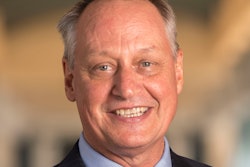California has the most severe nursing shortage in the country, according to a recent survey, but more minorities are on track to fill the gap because of a diversity initiative funded by The California Endowment, a private, statewide health foundation based in Los Angeles. At 589 registered nurses per 100,000 residents, California has the lowest number of registered nurses in the nation, according to a 2004 national survey conducted by the U.S. Health Resources and Services Administration. The national average is 825 registered nurses per 100,000 residents, the survey indicates.
A new report on the $10 million Nursing Workforce Diversity Initiative, which targeted Hispanic, Southeast Asian and male students for entry into nursing, shows promising results just as another of the foundation’s initiatives, the California Dental Pipeline Program, is under way to help minority students prepare for dental careers.
The nursing initiative, which began in 2002, sought to increase student enrollment at public nursing programs in California’s Central Valley, a region with the worst nursing shortage in the state, officials say. Nursing school representatives have reached prospective students through health fairs, conferences and regional community events, says Angela Minniefield, interim executive director of the Sacramento-based Health Professions Education Foundation. As an added incentive, the endowment and health foundation have provided more than $1 million in scholarships to students who have agreed to practice in underserved areas of the Central Valley region.
As a result of the nursing initiative, enrollment in nursing programs at area community colleges has increased by more than 60 percent overall, and minority student enrollment has increased by 13 percent, says George Zamora, a program associate for The California Endowment. While the project is in its final stages, officials have worked aggressively to maintain relationships with area schools and community-based organizations in hopes of attracting more minority applicants. The current racial makeup of the nursing work force in California is 63.9 percent White; 6.3 percent Hispanic; 3.8 percent African-American; 21.9 percent Asian and 4.1 percent other, adds Zamora.
“The (nursing) initiative produced additional nurses of all colors and increased the number of male students who are pursuing nursing,” says Zamora, who adds that California State University-Bakersfield currently boasts the highest number of male nursing students in the nation thanks to the initiative’s recruiting efforts.
Zamora notes that the nursing program and other initiatives that are funded by the endowment are part of a larger goal to diversify the health care work force in the state of California. Because of the state’s affirmative action ban — also known as Proposition 209 — public higher education institutions can have a stated commitment to diversity, use race/ethnicity in outreach programs and collect data on race and/or ethnicity, but can only carry out race-neutral programs “that do not have as their primary purpose furthering race-conscious objectives.”
Zamora notes that private foundations have had to step in to advance the mission of improving diversity among nursing students.
“Patients who may not speak English feel more comfortable when they receive health care from individuals who speak their language and look like them” says Zamora. Under the $6.3 million California Dental Pipeline Program, four dental schools in California — Loma Linda University Adventist Health Sciences Center, the University of the Pacific, the University of California, Los Angeles, and the University of Southern California — each received up to $1.3 million in funding to develop minority student recruitment and retention programs. For example, dental school representatives regularly visit area high schools and colleges that have traditionally high rates of low-income and underrepresented students.
“In the current Phase II program in California, all of the California dental schools are continuing and expanding their efforts to recruit underrepresented and low-income dental students, increase cultural competency of all dental students and form more intense and collaborative relationships with community clinics,” says Dr. Paul Glassman, a professor of dental practice and director of Community Oral Health at the University of the Pacific.
In 2001, Dr. José Ramón Fernández-Peña, an associate professor of public health education at San Francisco State University, spearheaded the development of the endowment’s Welcome Back Initiative. This project has helped hundreds of foreigntrained health care professionals become licensed in the United States. After a mandatory job and educational history evaluation, many Welcome Back participants opt to return to the classroom to earn other credentials or advanced degrees and, subsequently, enter the health care work force in the United States. Currently, about 600 students are enrolled in educational programs through this initiative, says Fernández-Peña.
© Copyright 2005 by DiverseEducation.com





















